Hello everybody!
Exactly two weeks into the Ukrainian operation in the Kursk Oblast of the Russian Federation, Pudding’s PRBS-industrialists are having answers to all the possible questions and know everything.
Arguably, there’s no talk about ‘British style’ operations by such ‘top’ Russian commanders like Alaudinov anymore – regardless of the fact he appears to be spending more time in front of War Gonzo’s and other of PRBS-industrialist microphones, than actually commanding Akhmat (or at least I didn’t catch any new statements of that kind the last week). There’s also no talk about an imminent collapse of the ZSU anymore, about Ukraine ‘wasting its last reserves’… not even about liberation of the Kursk Oblast ‘from raiding hordes of Nazi-kokhols’ in a matter of 3 or 4 weeks or similar. Instead, the newest version is that ‘well-trained and equipped’ Ukrainian troops are using Russian civilians as human shields, and that the liberation is going to be completed in October – when additional troops are going to arrive from the Far East.
Probably because one shouldn’t waste noble Muscovite teenagers for the liberation of the holly Mother Russia…
Above all, the latest version is that NATO is supplying immense volumes of battlefield intelligence to the ZSU. Who cares about what the Trio Fantasticus in the White House has said in this regards, or how much is it blocking the deployment of weaponry like M141 HIMARS, M270 MLRS and similar inside Russia - with the aim of apeasing Pudding: Pudding’s PRBS-industrialists know that NATO has lined up so many intelligence-gathering systems in the space above Russia that the Ukrainians know everything about the Russian dispositions, their troop strength, every of their moves – even when they go to the loo – while they know nothing about the Ukrainians.
Moreover, so they explain, Ukraine is getting everything and only the best from the West. Huge amounts of super-turbo-advanced armament and equipment, and new uniforms making Ukrainian troops invisible. Not only at night. As a result, all the standard Russian FPV-frequencies are severely jammed, even wire-guided drones are disturbed and they can’t use them. On the contrary, Ukrainian FPVs are present in swarms, interdicting their supply trucks so frequently and severely that even the supply of water and ammunition is disturbed. Especially so within the so-called ‘UAV Kill Zone’ along the western section of the E38 highway, between Rylsk and Lgov.
…and the Ukrainians are taking away thousands of Russian civilians, herding them to Sumy for use as human shields against humane Russian air strikes on the local hospital full of ZSU casualties, and terrorising them with their Swastikas… and deploying chemical weapons, of course…
And while for the local Russian civilian authorities (as far as prevented from fleeing, like those in the Glushovsky District) the situation couldn’t be clearer (see: the Ukrainians have a better knowledge of the local terrain than they do), the Russian civilians can’t stop wondering how could all of this happen to them… and to Russia.
They’re only sure that Putin does not know about their plight – and that, once he does find out, he’s promptly going to save them…
Here it must be kept in mind that, just like the population of any other country, the Russian population is indoctrinated in a very specific fashion. Up front: Russia is wherever there is one Russian. It has no limits, and thus no borders. And the Russians are internationalists that can’t do any wrong, but: the Russians are constantly wronged. Foremost by the Anglo-Saxons. Which is why the Ukrainians fighting against Russian invasion can’t be anything else than Russians fooled into becoming nationalists, militants and Nazis.
Their next point is that of international conspiracies. Foremost against Russia. Correspondingly, Russia was exposed to a NATO aggression. Indeed, this war was imposed upon Russia and Russians: they have been invaded and subjected to a genocide. In Donbas and elsewhere. For decades already. And that because they were not left to declare and establish their Novorossia wherever they want.
As every decent Russian knows, Ukrainian militant nationalists can’t think on their own: they are puppets of their Western masters. Unsurprisingly, nobody there is ever coming to the idea to consider the possibility of the Ukrainians actually being curious to mind their own business - and the Russians to do the same. How could Ukrainians think that way if they are fooled Russians that can’t think on their own? It also can’t be it’s the Ukrainians who are outfighting the Russians: they are remotely controlled by NATO. After all, NATO is an aggressive alliance, exercising remote control over everybody and everything, and aiming to destroy Russia.
It’s for this set of reasons (could add additional ‘details’ of that ‘conspiracy’, without an end) that already the Russian ‘withdrawals’ from Eastern Kharkiv and from Kherson west of Dnipro were conspiracies, too: exchanges of territory secretly agreed between Washington and Moscow, in which the West cheated and the Russians were wronged once again. Because only Washington and Moscow are the powers making decisions. There’s nobody and nothing of importance in between…
That is one set of answers to your set of questions: the one related to the issue about how this war is perceived in Russia.
***
Another set of your questions was related to what exactly is Akhmat doing, and how are the Russian and Ukrainian units in this battlefield organised.
As mentioned earlier, there are two Akhmat units deployed in the south-western Kursk Oblast. One is the 204th Spetsnaz Regiment, the other the 1434th (Territorial, i.e. reservist) Motor-Rifle Regiment. Administratively, both are elements of the Rosgvardia. I.e., actually: directly subordinated to Putin, not to the Russian Ministry of Defence. Of course, when deployed in a combat zone in the Kursk Oblast, they’re subjected to the control of the FSB, like all other elements of the Russian armed forces deployed there (see. VSRF and the VDV).
Equipment-wise, the Akhmat is better-equipped (indeed: pampered) than the average VSRF unit, too.
Their principal purpose is that of ‘corseting’ the VSRF: watching over their loyalty, making sure they do not flee but remain where the are and fight. Correspondingly, they are always deployed slightly to the rear: sometimes that’s 500 metres, 1000 metres, 2000 metres behind the forward line of contact. Sometimes further to the rear. Depends on circumstances.
Now, the reason the Akhmats are frequently (and severely) hit by the ZSU in the course of this operation – and have suffered significant losses, including dozens of troops taken prisoners of war (POW) – is that the ZSU in the Kursk Oblast is manoeuvring so much: because there are no deep minefields nor heavily fortified Russian lines of defence (at least not yet), the Ukrainians are ‘free’ to manoeuvre around enemy units. Supported by UAVs, which are running reconnaissance ahead of them, small ZSU units – usually platoons with 2-6 vehicles – are constantly driving into the flanks, and the rear of the Russian units. Once there, they ‘hit and run’: they attack the Russians, kill some, capture others, then drive away. Sometimes they return to their original positions, but more often they turn in a different direction, and raid some other Russian unit. Or they drive 5, 10, 15 or more kilometres behind the foremost Russian positions, hit something (especially supply convoys), and disappear…
In other cases, it does happen that the ZSU collapses one VSRF unit, and then runs – and unexpectedly – into one of Akhmats’ blocking forces. That’s what happened in Belitsa back on 11 August, when the 82nd Airborne lost 5 BTF-4s knocked out and 2 captured.
However, mind that that was just one such case. Mind that the Ukrainians are running dozens of such ‘raids’ every single day. Especially by night. Combined with intensive operations of the Ukrainian FPVs, they are making the entire combat zone from the E38 highway in the north, the E105 highway in the east, and down to (at least) Vishnevo ‘unsafe’ for the Russians.
This is ‘nervy’ for FSB’s commanders of what nobody else than Pudding declared an ‘anti-terrorist operation’, a sort of ‘environmental disaster’, no ‘war’, or a serious combat operation as such (which is also why the Russian troops fighting in Kursk are receiving only about 20% of the pay the Russian troops fighting in Ukraine are receiving). It is ‘nervy’ because they can never be sure about the status of their own troops. Take the 200th Arctic Motor-Rifle Brigade as example. This arrived within the combat zone about a week ago. While driving from Kursk down the R200 highway, it was ambushed at least two times, losing troops and vehicles in the process. Meanwhile, it’s somewhere near Bolshoe Soldatskoe (which, BTW, turned out not to be under the Ukrainian control, but also not under the Russian): there, it’s constantly ‘needled’ by Ukrainian raids. Lost one ‘vehicle and three troops on its northern flank’, a ‘tank and three troops on its southern flank’, ‘two trucks and four troops in its rear’ and so on… as a result, neither its own commander, nor the FSB in charge of this entire operation can ever say that right now the unit is ready for the next combat operation. One of its elements has been hit, needs reorganisation, then, while this is going on, another part gets hit, and then another… ‘Threat is everywhere’ around the unit, nobody knows where are Ukrainians, and the result is a chaos…
The next problem experienced by the headquarters of Lieutenant-General Alexey Duymin (FSB) is that the mass of units under his command are ‘re-builts’: units that were in the process of being re-built after suffering heavy losses in Ukraine. Correspondingly, they are short on everything: on troops, but also on equipment. Indeed, the mass of ‘new arrivals’ in the combat zone are lacking even radios and reconnaissance drones, not to talk about tanks and other armoured fighting vehicles, artillery, trucks, and other vehicles. Actually, only the two Akhmat regiments have entered this battle something like in ‘intact condition’.
….and, especially units lacking UAVs are ‘entirely blind’ on modern-day battlefield. They are vulnerable – easy to take by surprise and subject to attacks form unexpected directions – even if only camping 10-15-20km behind the battlefield.
Duymin’s headquarters seem to have found two ‘solutions’ for their immediate problems.
The first was to assign newly-arriving reinforcements to headquarters of units that are already in place. For example, the 488th Motor-Rifle Regiment: that unit was smashed in the Sudzha area, but is still around and fighting. The reason is that it was re-built/reinforced by elements from multiple other regiments. For example mobiks of the 1428th MRR, probably by the 245th and 272nd MRRs of the 47th Guards Tank Division, too. In similar fashion, the ‘11th VDV Brigade’ seems to be only present in form of its headquarters, perhaps a company or two of troops, which in turn are controlling the 252nd and 346th MRRs, and/or some other units. Finally, the 810th Naval Infantry Brigade might meanwhile control a total of up to five different battalions….
The second is that the FSB began, literally, ‘lining up’ ever more units, in ‘shoulder-to-shoulder’ fashion, in order to create a semblance of a ‘defence line’. Kind of: ‘if we pack enough troops into the combat zone, there’s no enough space for the Ukrainians to pass by unoboserved’. That’s how they are trying to curb continuous Ukrainian raids into the flanks and the rear of subordinated units of the VSRF and the VDV: behind them, he’s deployed detachments of the Rosgvardia/Akhmat, to control nobody to run away.
The third is that Duymin’s headquarters began ordering their units to start ‘Dombassing’ the Ukrainians. See: they are constantly pressed to launch counterattacks. This is easier said than done because they simply do not know where is what of ZSU units: they do have a general idea about these being, say, ‘somewhere along the line connecting Bolshoe Soldatskoe with Giri’. But, while that looks ‘simple on map’, it’s very complex, and deadly, out there in the nature. In the nature, the terrain is uneven and covered by vegetation: that’s offering plenty of opportunities for concealment. Which is why the principal Russian problem remains that of finding the Ukrainians. And even once they’ve got close enough to find some, to initiate an engagement, they do not know exactly what have they found. Not even if that is the main Ukrainian position, or just a few troops with a machine gun… or a pair of snipers? They have to find out, and while trying to find out, they’re constantly suffering casualties. And then they also get hit by FPVs, and then the Ukrainian artillery…
Still, this ‘Dombassing’ is having its effects upon the Ukrainian conduct of operations: the ZSU can’t ignore the Russian counterattacks and let them pass by. Every time there is one, Ukrainians have to stop, entrench, ambush and counterattack. And they’re doing that. However, after every such clash, they have to switch positions (because their original positions became known to the Russians and thus they have to hide again), then replenish ammunition and supplies, and then run renewed reconnaissance by UAVs in order to find the new Russian positions. That’s taking time (usually: several hours per every Ukrainian company and/or battalion deployed inside the combat zone, a day). Sometimes, the situation is opportune for the Ukrainians to exploit the beaten Russians falling back, and then they advance few additional kilometres, like back on 16-17 August in the area west of Maly Kamanets. Other times not.
From the Ukrainian point of view, that’s fine that way. From the Russian, as said: that’s ‘nervy’ – because the pesky Ukrainians are so non-cooperative…
Finally, there seem to be a new arrival on the Russian side: apparently, a regiment (or two) of the 98th VDV Division has been deployed to bolster the shaky remnants of the 17th Border Guard Battalion FSB. Another rumour from the same area is that elements of the 155th Naval Infantry Brigade have been brought there. That’s what resulted in the following map – where I would like to stress: ‘all of these red arrows’ do not mean ‘the Russians are advancing, big style’. It simply means that these are primary directions of their counterattacks. Should there be any doubts: if that would be any other way, the ZSU wouldn’t continue its methodical advance into the Glushovsky District. Nor would it stop advancing from Sudzha in eastern direction, just for example. I’m rather ‘self-censoring’ and thus have left the ZSU units out.
***
For the end, an answer to another question - and then something about an issue that remains much-ignored in this war: how comes the Russians have managed to deploy reinforcements to the Glushkovsky District, considering the Ukrainians knocked out all, or at least most, of bridges over the Seym?
At war, knocking out a bridge is never automatically resulting in something like permanent condition. Especially not when one is fighting the Russians.
The VSRF is well-equipped with PMP pontoon bridges. These are highly flexible pieces of equipment, consisting of floatable sections. These are carried by trucks and easy to deploy - by sliding into the river:
Multiple sections are then connected together, to create a bridge:
…and mind that the Seym River is no Atlantic Ocean: it’s a relatively narrow and shallow river. Depending on its width at the selected point, a well-trained engineering unit can construct a bridge in a matter of 30-60 minutes (think to recall, the record from the 1970s was some 15 minutes).
Moreover, because PMPs consist of floatable sections, as and when necessary - for example: because the Ukrainians are constantly targeting the Russian pontoon bridges - the VSRF’s engineers can fold up the bridge and re-deploy it at a different point, or repair its damaged sections by spare sections, or tie two or three sections into a floating barge, which can still carry a tank, or a supply truck, but is mobile, and thus much harder to hit.




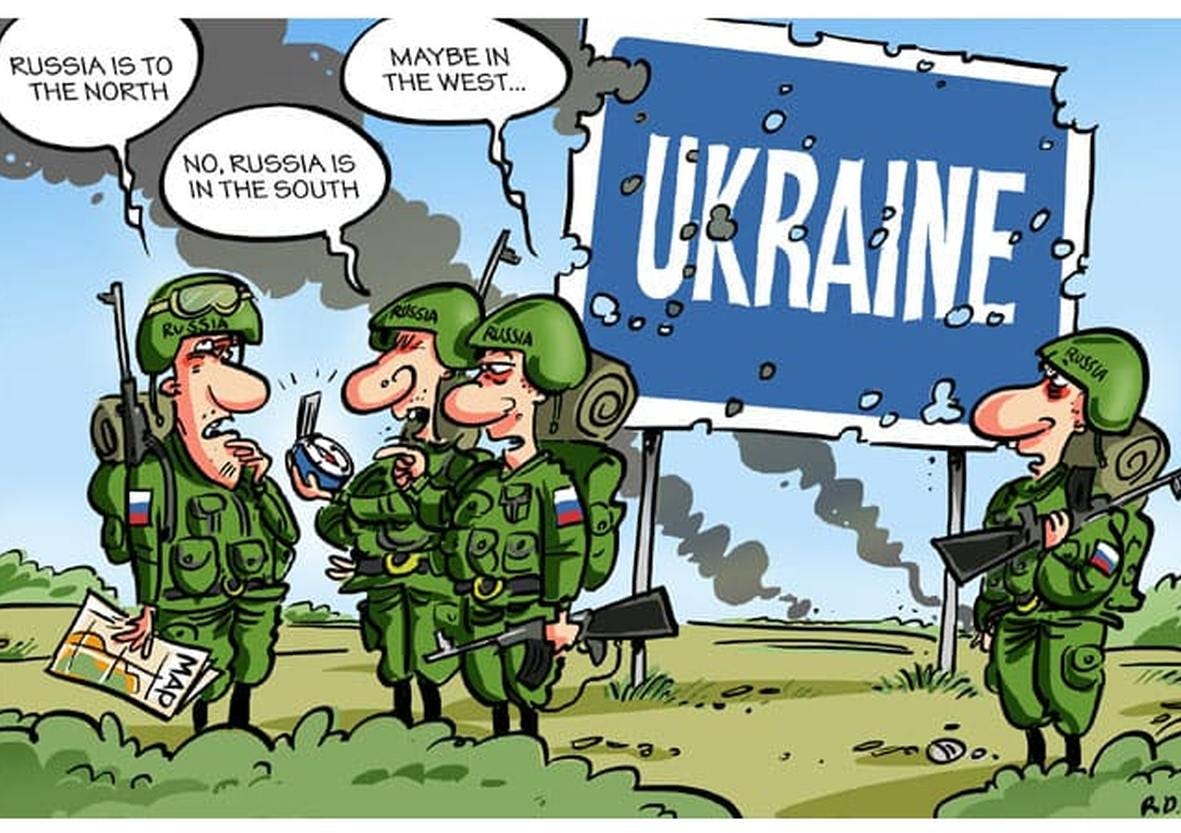

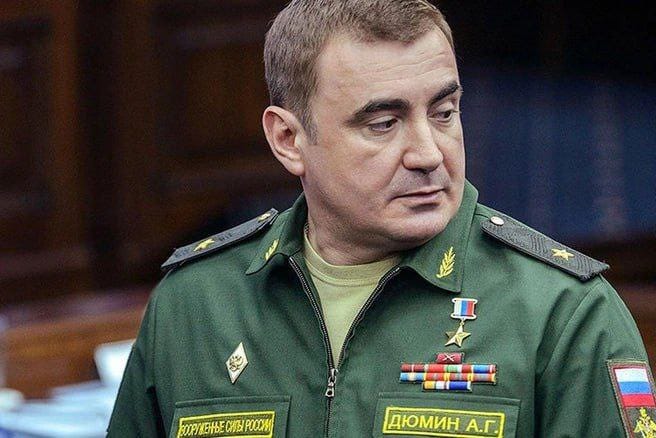
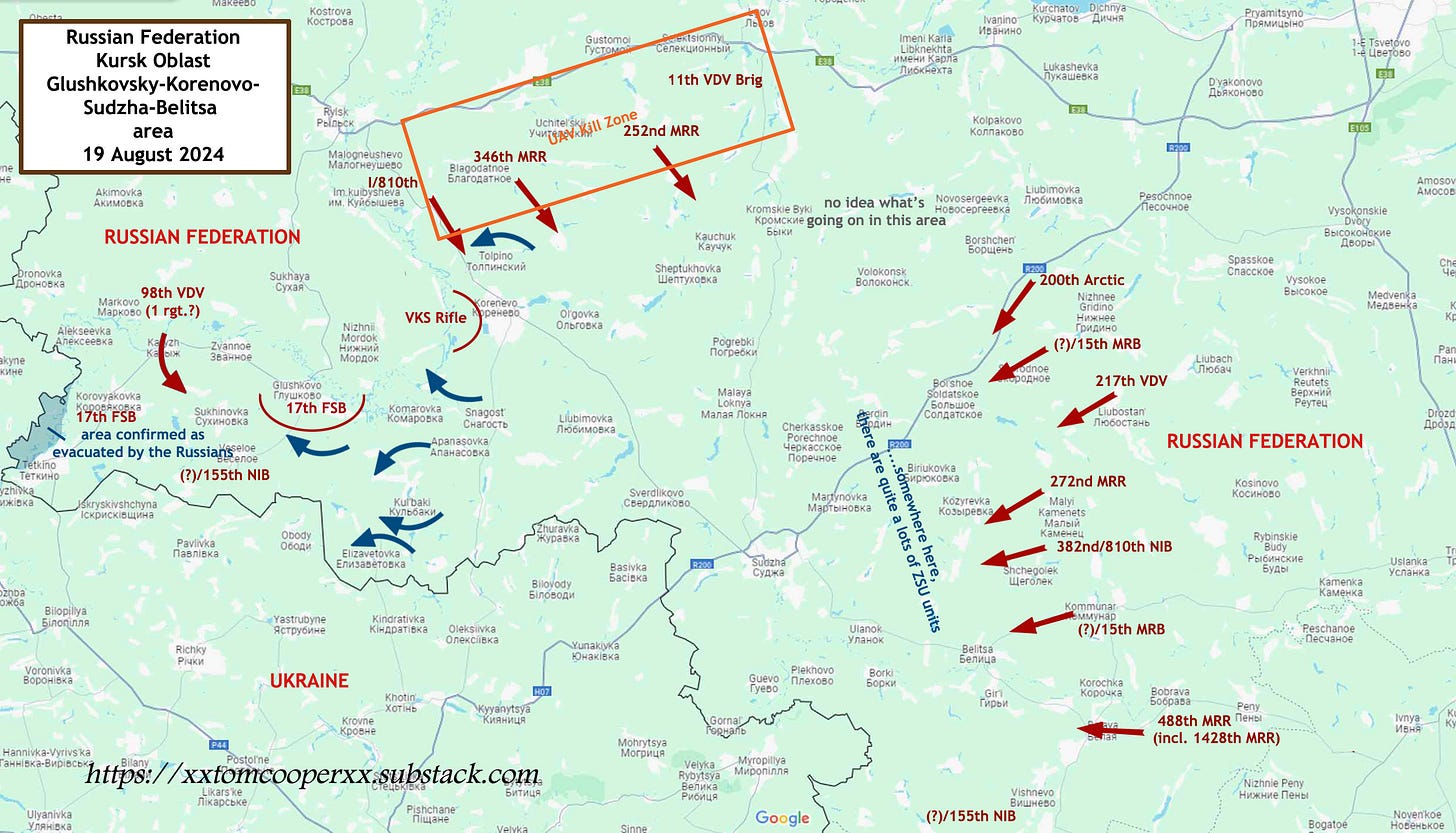

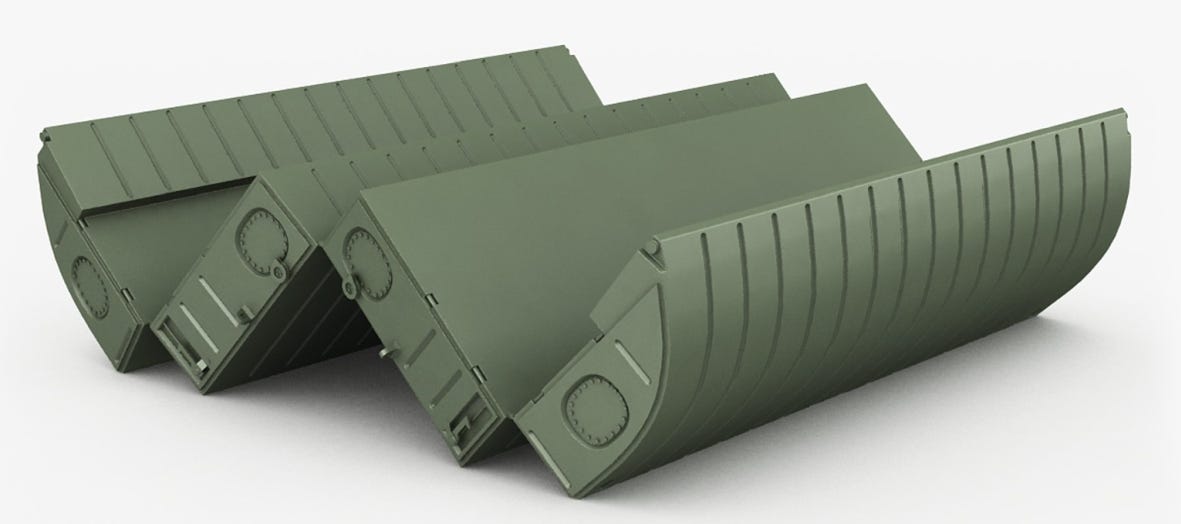
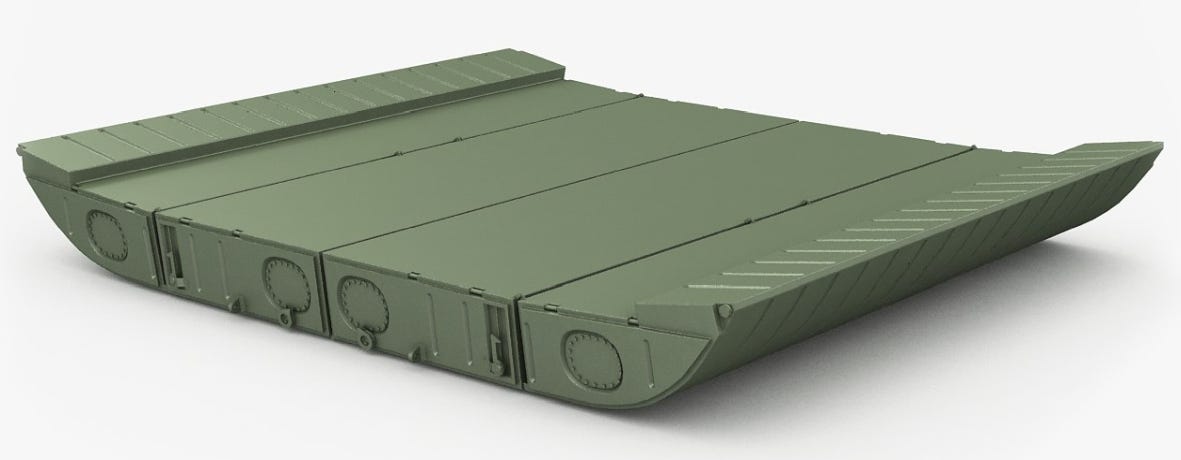
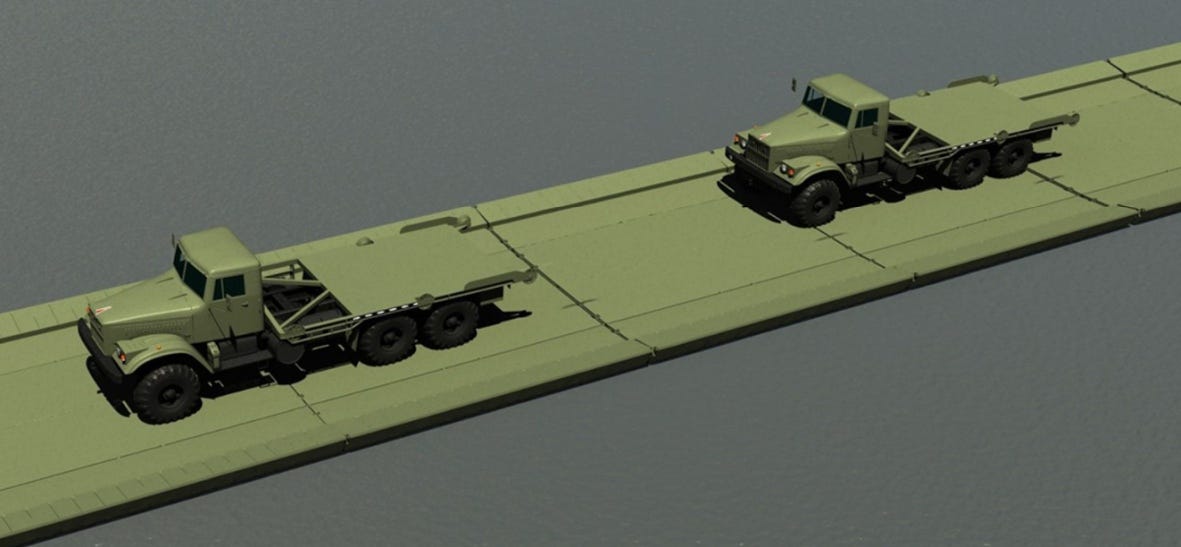
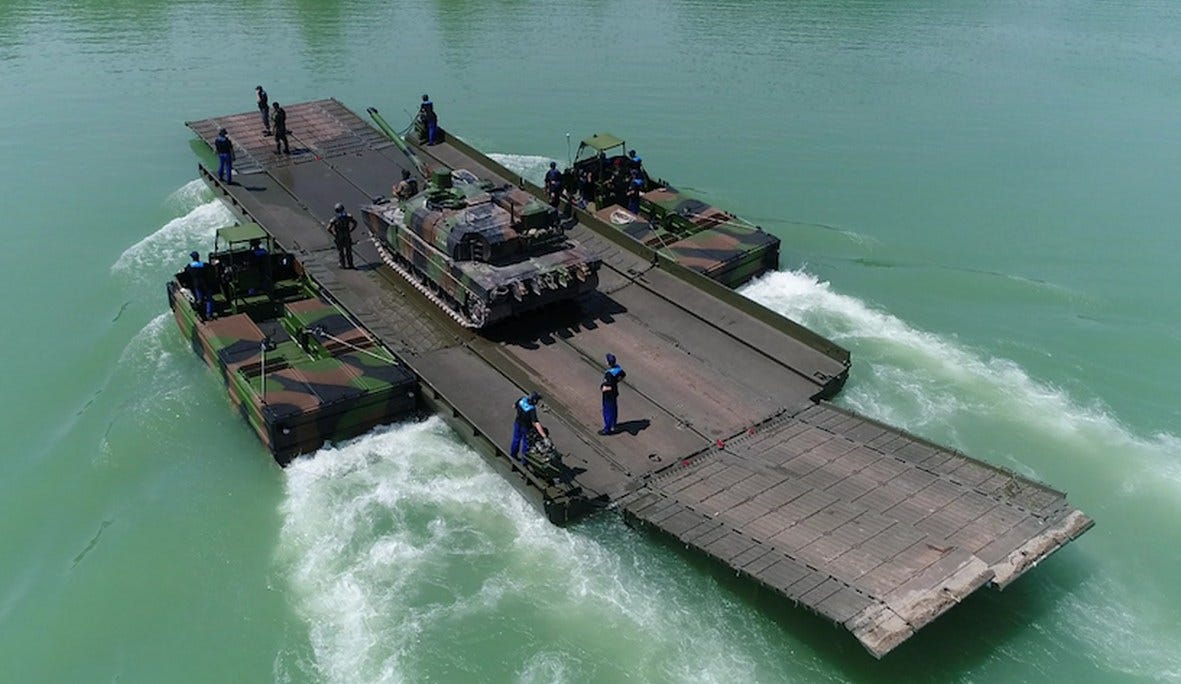
Thanks Tom. For as long as this remains a maneuver warfare, the ZSU will continue inflicting disproportionate damage to the VSRF. Russia does not have enough heavy equipment, it does not produce enough, it loses too many and it has run out stored equipment in good enough condition for easy refurbishment. The VSRF has been fighting a trench war for the last 12 months. Trying to limit the use of armour, focussing on infantry and glide bombs. These are fairly useless when the enemy is maneuvering. Yet again, the ZSU has proven the Tsar has no clothes.
PS: Amazes me the Western Experten of Experting are still debating the point of invading Kursk. It seems nobody has told all those retired generals, civilian analysts etc. that the point of war is to kuddle 'em all.
"exchanges of territory secretly agreed between Washington and Moscow". That made me chuckle. :-). Thanks!